Review of the multiformat DVR "Line XVR"
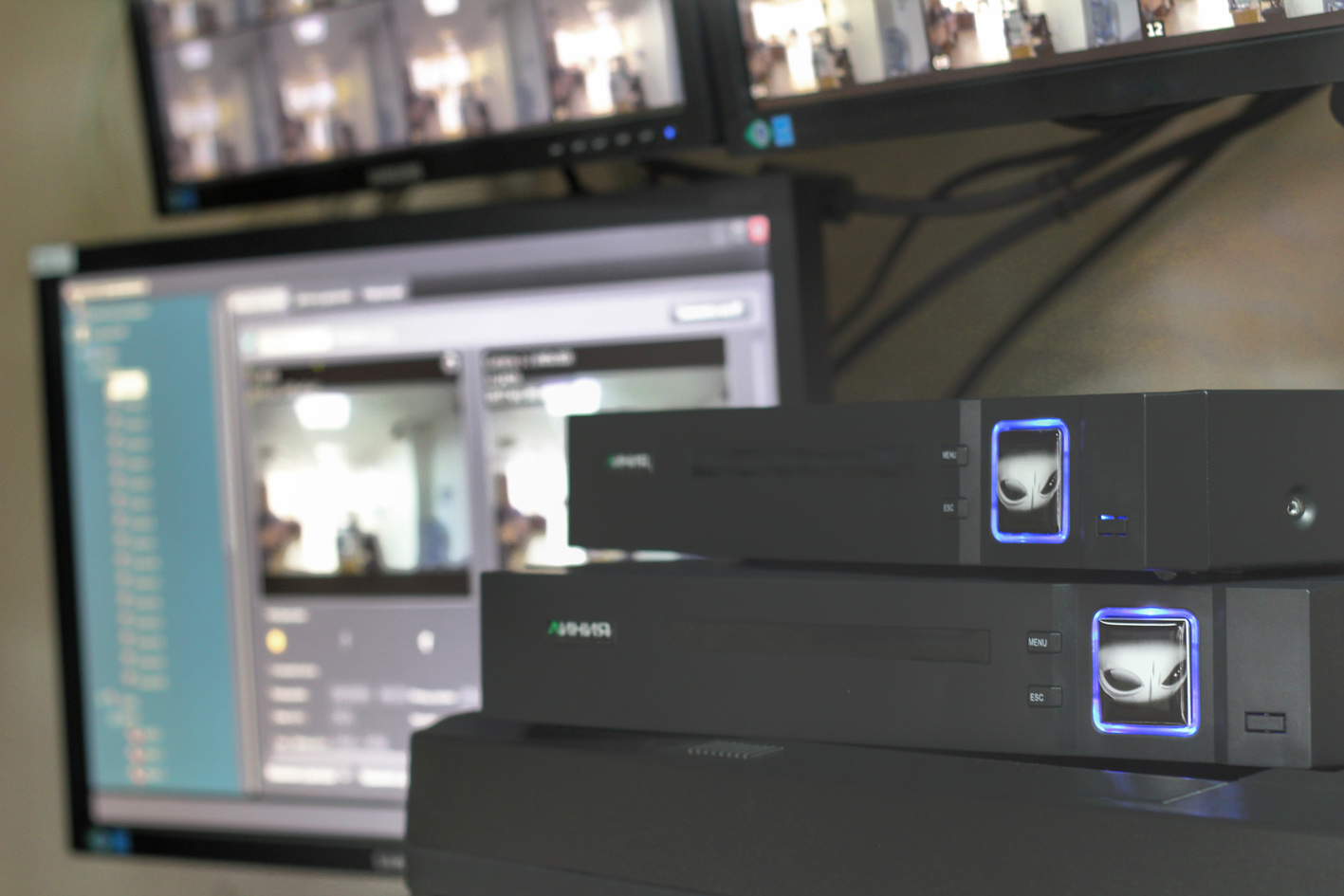
Our customers have long been waiting for the appearance on the DVR market under the brand "Line". And there are several reasons for this. Firstly, there was a breach in our product line - we had nothing to offer our customers to work with modern multi-format analog cameras, which have so rapidly flooded the market over the past couple of years. Secondly, the price. Solutions for small computer-based video surveillance systems did not compete with low-cost recorders, which in turn became better and more functional.
The first sign was a universal 16-channel DVR with support for all modern formats of analog video surveillance - AHD, TVI, CVI, CVBS, besides providing the ability to replace any analog channel with IP. We called this device the “XVR Line” and tried to put into it everything that users value our system for - simple setup and use, wide functionality, and lower price than competitors.
This is our first experience in the production of DVRs. Next will be a review of the device from the appearance and technical characteristics to describe the problems identified and the upcoming changes.
Video Server vs DVR
Explaining what a DVR is to geektimes is unnecessary. Even the average person, who has never faced video surveillance before, has a clear association: you need a recorder to connect a camera. For many years we have offered only video servers . The reason is simple: high-quality hardware, the ability to replace defective components, the potential for upgrade. But, of course, great value.
We approached the issue of creating a registrar very seriously. The option of using Chinese “nouneyma” with sticking a company logo was rejected right away, because in case of problems with customers with such a product, it is quite difficult to provide full-fledged and high-quality technical support. Also especially acute would be questions about closing bugs and expanding functionality. Chinese suppliers are not particularly interested in wasting time on such issues, the main thing for them is to produce more and ship quickly.
The new device was supposed to be a full-fledged replacement for a budget video server, with all the capabilities of the Liniya video surveillance system, with a competitive price, with a guarantee of quality and excellent technical support. We even moved away from the standard dark packaging design, thus highlighting the new line in our product range.

Device characteristics
- Operating system: Linux.
- Network interface: 100 Mbps.
- Video output: 1xHDMI, 1xVGA.
- Other connectors: 2xUSB2.0, 1xRS-485.
- Operating temperature range: 0 ... + 55 ° .
- Power supply: 12 V / 4 A DC.
- Power consumption: up to 48 watts.
- Dimensions (H x W x D): 54 x 326 x 250.
- Wee net: 1.3 kg.
Equipment
In the production process, all DVRs, without exception, pass through three stages of testing. That is why we can guarantee the performance of each instance sent to customers.
Package Included:
- DVR "Line XVR" ,
- Power Supply,
- USB mouse
- terminal block for RS-485,
- screws for mounting hard drives,
- installation instructions,
- user guide of the program "Line",
- branded sticker "Video surveillance is being conducted."
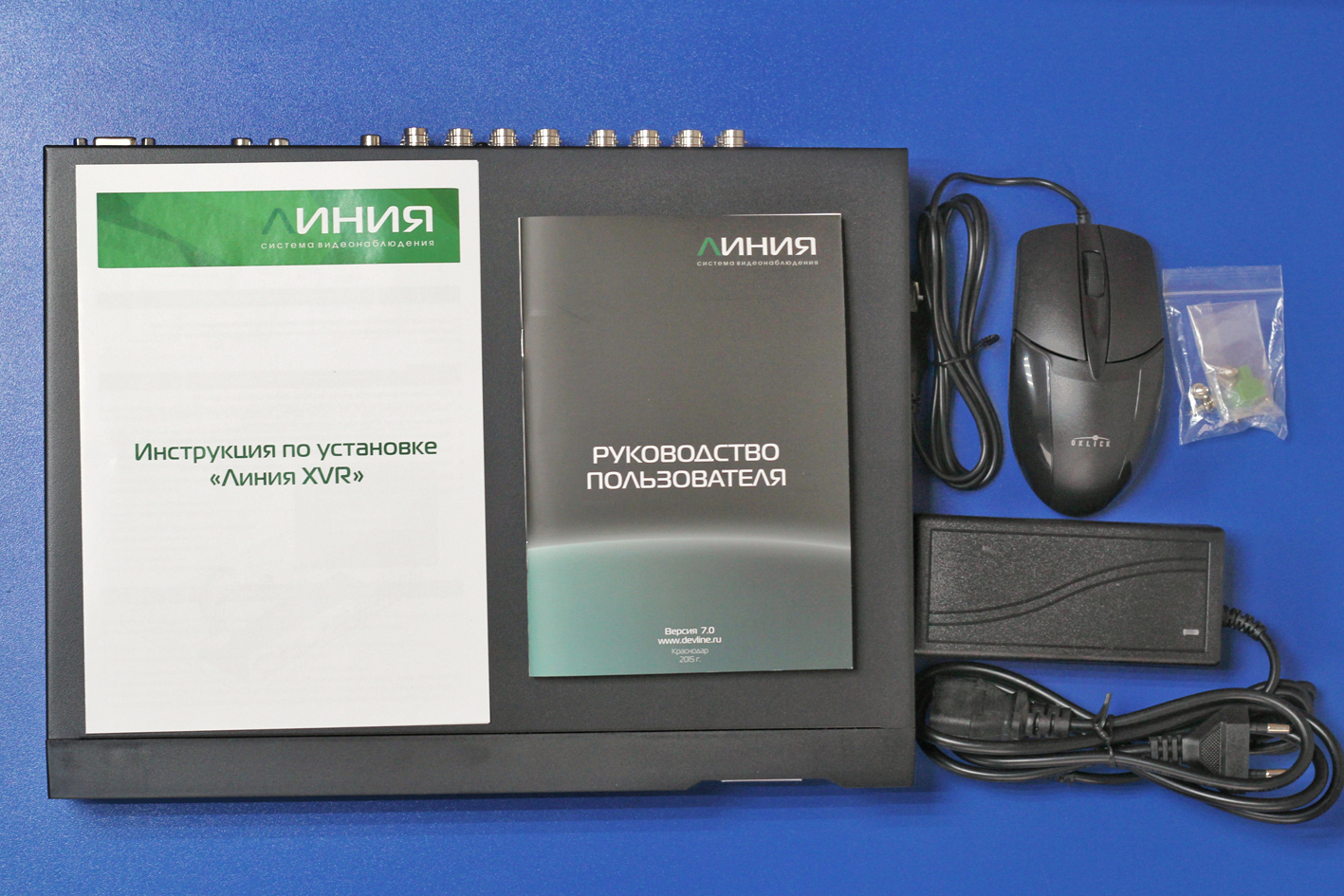
Inside the case is a board with a HiSilicon 3531A processor. We have built our own Linux distribution, using only the necessary components. The size of the firmware turned out about 30 MB. The porting of the Liniya system core to the Hi3531A hardware platform allowed the maximum use of the processor’s capabilities when working with video.
We also increased the amount of RAM, which allowed us to work with high-resolution cameras. Also, there is no need to reboot the device when the configuration changes (camera settings, channel mode switching - analog / IP). By using larger flash memory, we laid the potential for future expansion of the device functionality.
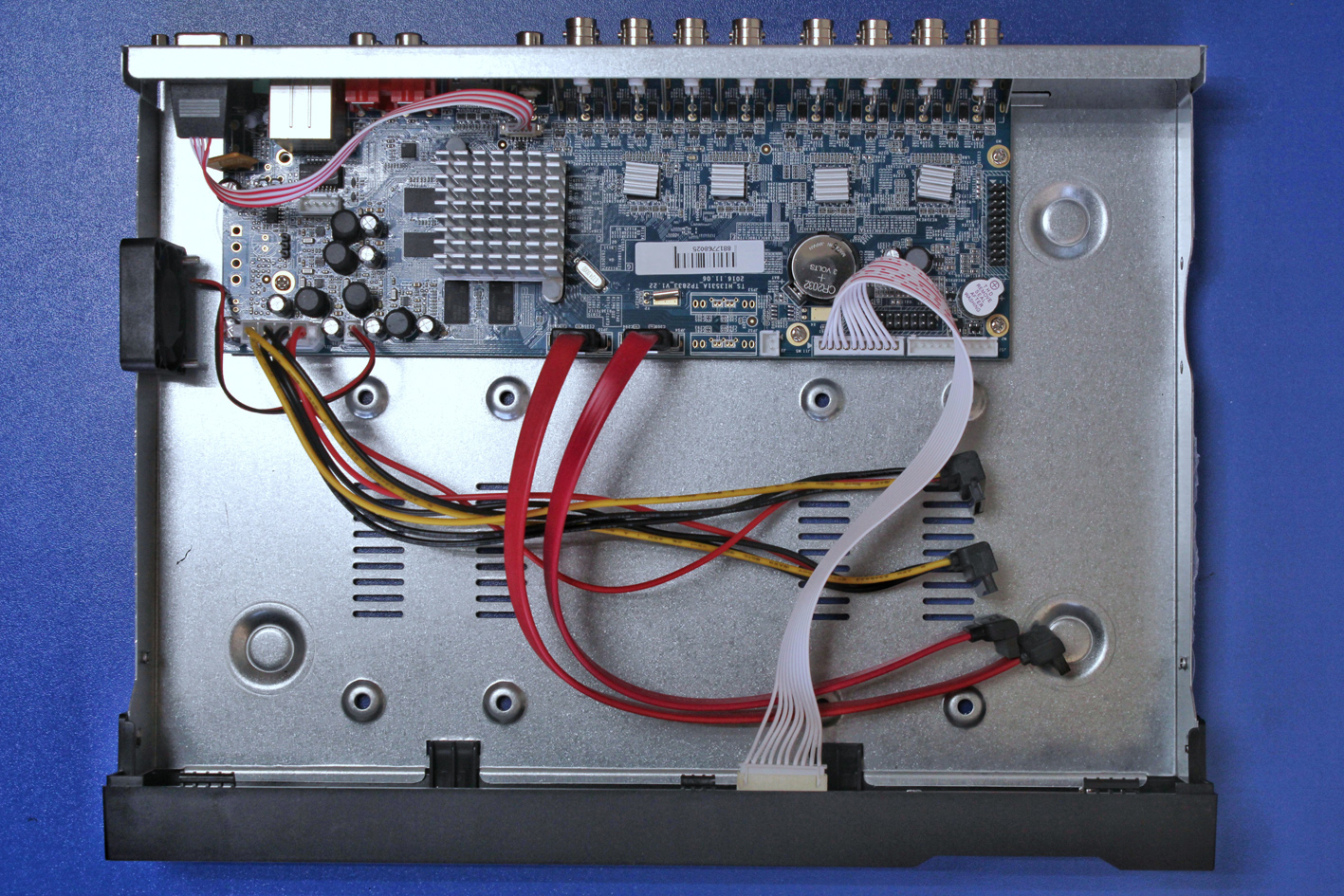
Inside the case there is a place for mounting two hard drives. Currently, XVR supports work with two HDDs of 10 TB each, which in total makes it possible to use up to 20 TB of disk space. On the firmware side, there are no limitations on the size of the disks, so new larger hard disks that will appear on the market can be used without problems with our device.
The XVR rear panel contains 16 BNC connectors, 1 audio output, HDMI and VGA connectors for connecting monitors, 4 RCA for microphones, one network interface, 2 USB, RS-485 and a power connector.
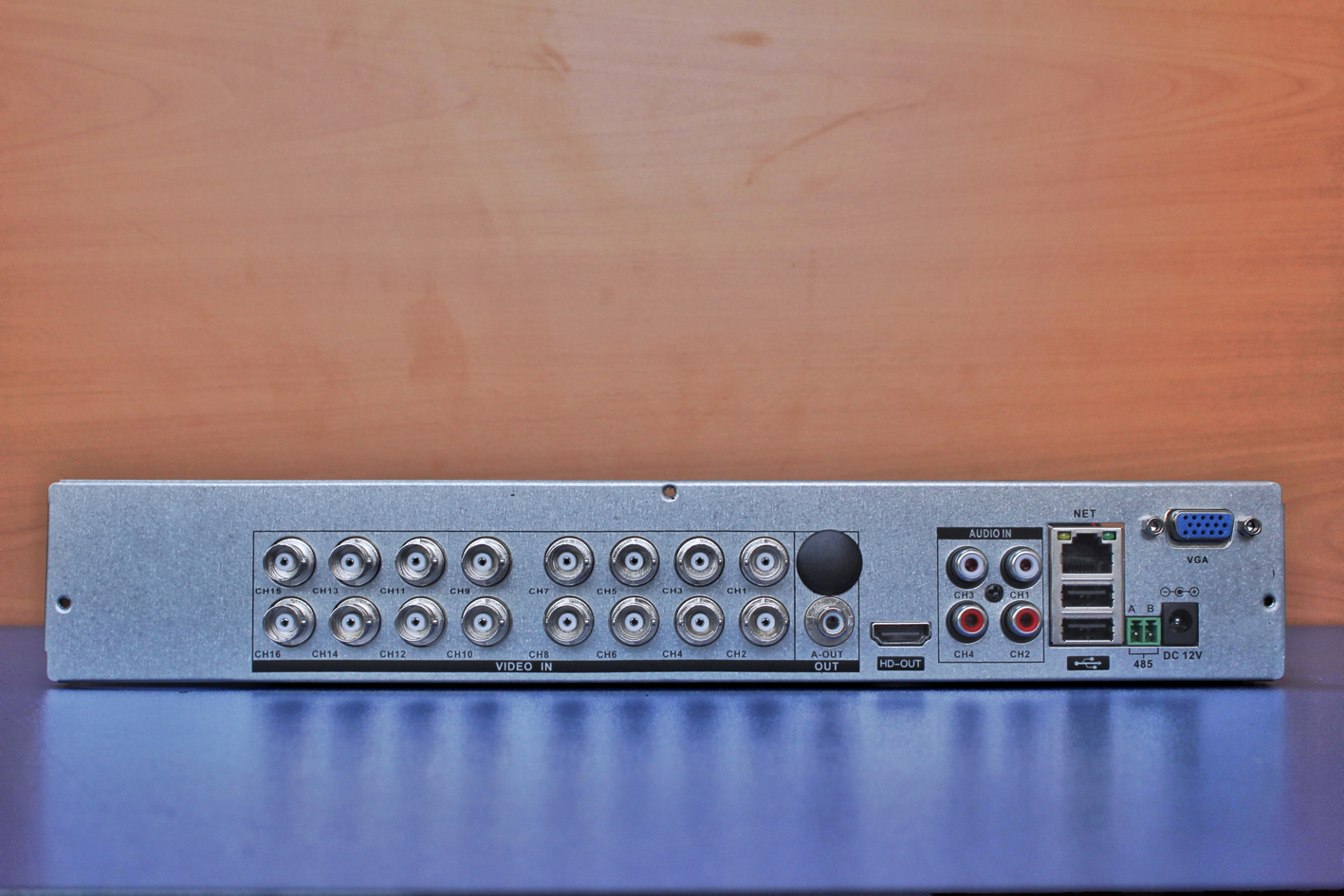
The body is compact and lightweight, made of metal and plastic.

And now tell you about the problems identified in the process of primary operation. Our first slip is related to the hull. First, in order to open it, a certain skill is required. If you approach this issue only from the side of brute force, plastic latches can not stand and break off. That is why we made a video instruction on how to easily open the XVR without damage to the body.
The second slip is the front panel. It turned out that connecting USB devices, such as a mouse or an external USB drive to store exported video on it, is very inconvenient: numerous cables interfere. Therefore, in future versions of the device, the front panel will be processed and an additional USB port will be placed on it.
Third - mount HDD. The new models of hard drives are slightly different attachment points, so I had to mount with two screws out of four.
Summing up, we formed a list of changes that we intend to make in the following versions of the device:
- we will change the design of the top cover, opening the case will take place without effort and risk to break something;
- replace the fan with a less noisy model;
- add power control button on the back panel;
- Expand options for HDD mounts;
- rework the front panel.
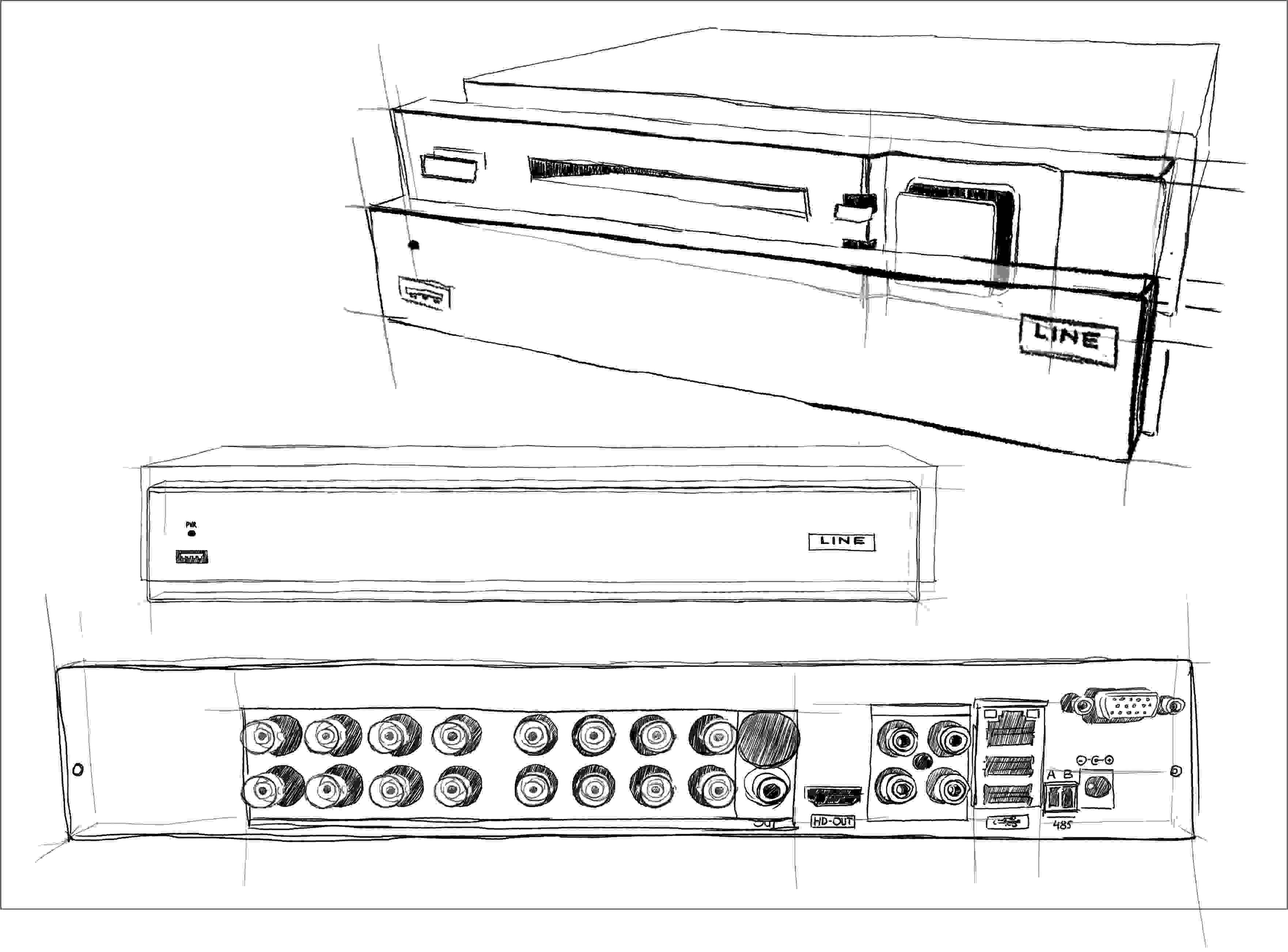
The project of the new building "Line XVR"
Connecting CCTV Cameras
As already mentioned, this is the first device from the "Line", which simultaneously supports five video camera formats: AHD, TVI, CVI, CVBS and IP. With such a variety of device options, questions arise about the connection and configuration. In the initial configuration, the recorder is configured to work with 16 analog cameras, the signal format is automatically determined. Thus, there is no need to configure anything, just connect the camera to our device.
Taking into account the price category of the registrar, affecting the choice of processor used and its performance, we highlight the next point. The amount of information that the processor can handle is finite. Exceeding this volume leads to a decrease in FPS video recorded in the archive. Below is a table showing the final video parameters for the archive, depending on the number and resolution of the cameras connected to the recorder.
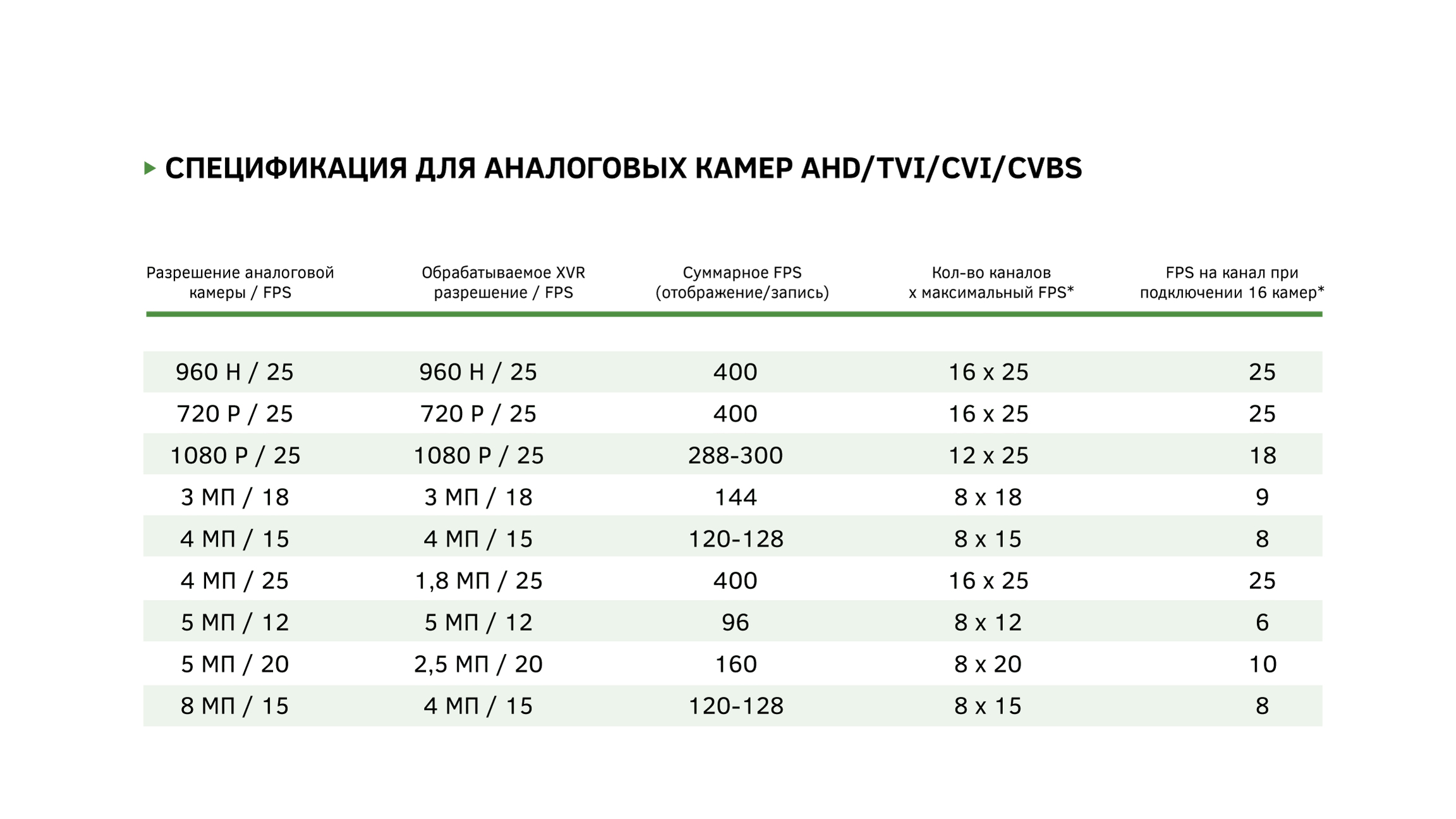
* Display and recording
IP cameras are configured remotely using our Line software, which must be downloaded and installed on a computer. Full local administration is tentatively implemented in the summer of 2018. All new features that will appear in the software will be available to the XVR through a firmware update. Here we do not depart from our principles and provide all subsequent updates for free.
Work with "Line XVR"
Local video viewing is possible both in real time and in archive mode. Switching modes through a pop-up panel.

More fine tuning occurs remotely.
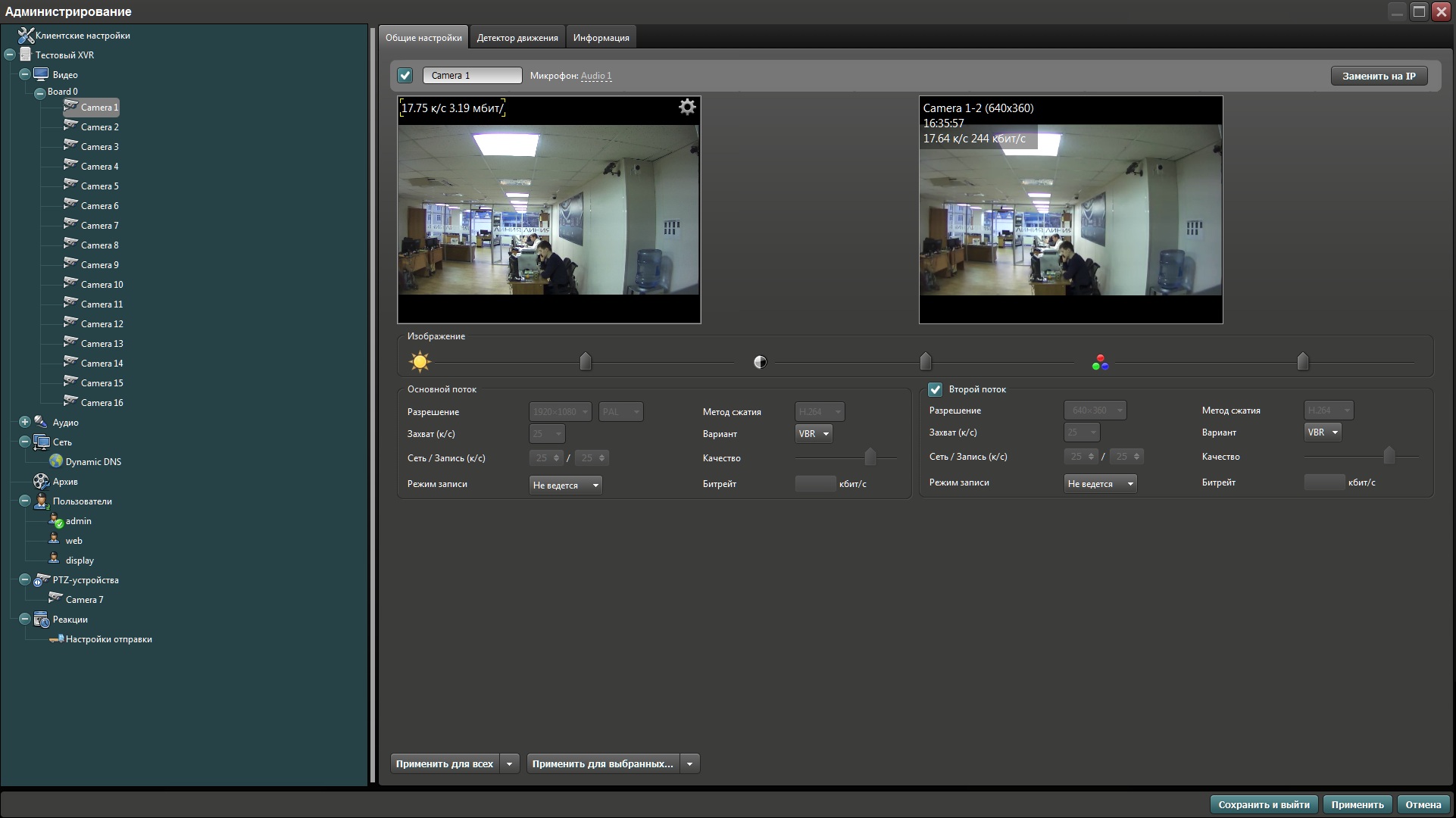
The following is a brief list of features that can be configured through the Line of Observation Software:
- multizone motion detection;
- video analytics on the detection, color and size of the object;
- setting up reactions: scheduled recording, notifications, saving individual frames on FTP;
- Domain Name Service DynamicDNS;
- TURN service for easy access via the Internet without a dedicated IP address.
In more detail about all functions we told in this article .
What's next?
Any undertaking entails errors. Defects in the design of the device are already given. What about the software part? In addition to local administration, we plan to refine / add the following functionality:
- local audio playback from the audio output;
- local blocking of the monitor screen;
- Local archive export to USB drives;
- control of analog PTZ cameras;
- use 3G / 4G USB modems.
To date, the “XVR Line” is a registrar that is easy to set up and use, the retail price of which is 16,000 rubles. It supports more than 3,900 models of IP cameras from various manufacturers , analog TVI, AHD, CVI cameras with a resolution of up to 8 megapixels.
Share your experience on which function in the DVR you find most important. What should we look for when developing this line of devices?
All Articles